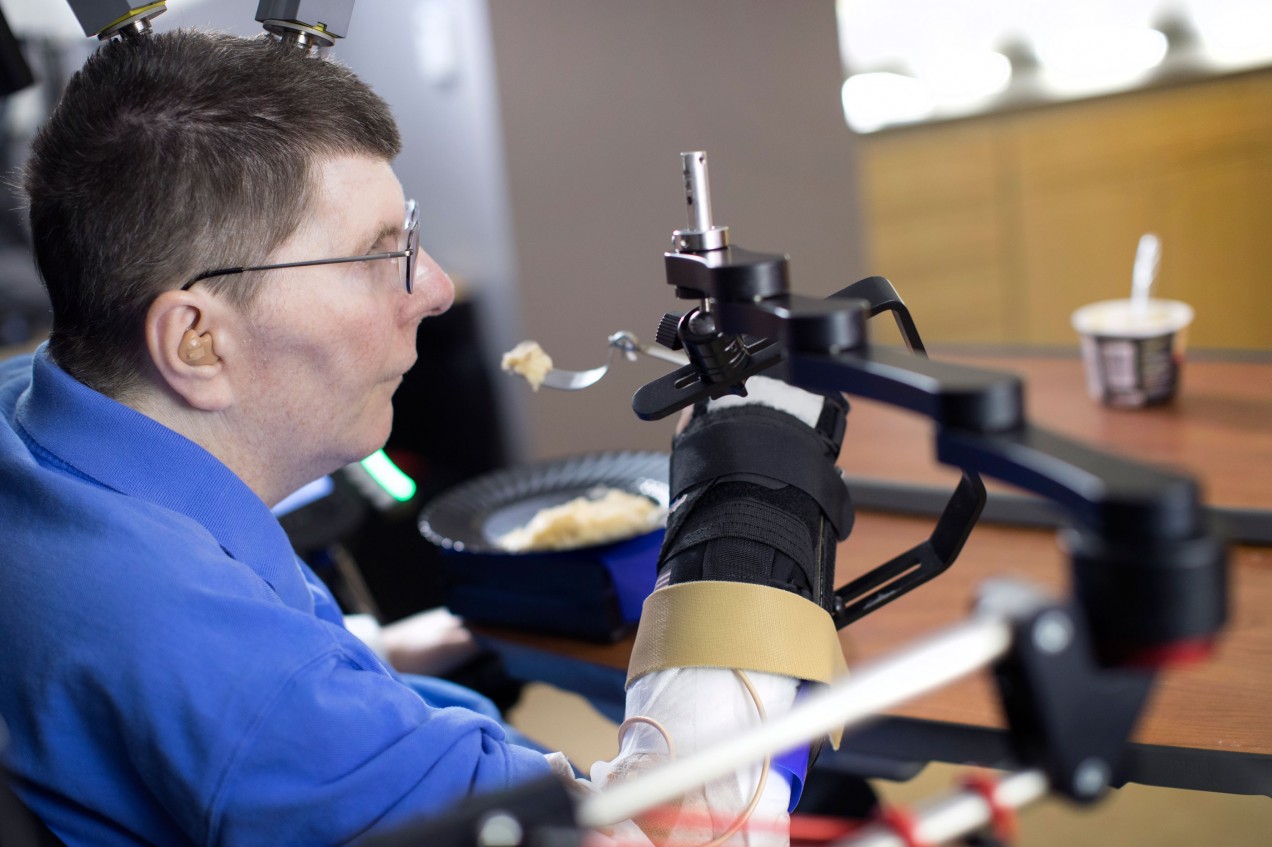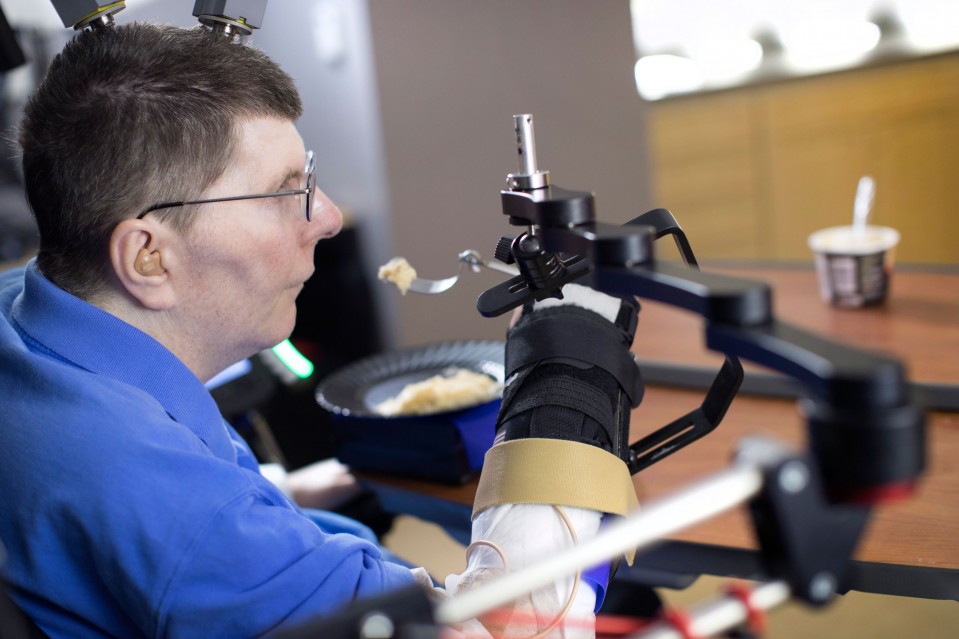

Rewriting Life
This Paralyzed Man Is Using a Neuroprosthetic to Move His Arm for the First Time in Years
To reverse paralysis, scientists wired a man’s brain to his muscles using electronics.

William Kochevar of Cleveland can slowly move his right arm and hand. No big deal—except that the 56-year-old had been paralyzed from the shoulders down since a bicycling accident ten years ago.
The setup that is allowing Kochevar to move his arm again is a “neuroprosthetic” involving two tiny recording chips implanted in his motor cortex and another 36 electrodes embedded in his right arm.
Now, during visits he makes to an Ohio lab each week, signals collected in his brain are being captured and sent to his arm so he can make some simple voluntary movements. “I was completely amazed,” says Kochevar.
With scientists looking on and monitoring banks of electronics, he was eventually able to drink out of a coffee cup and feed himself mashed potatoes, although he needs to rest his arm on a mechanized harness to do so. “The biggest thing that I can’t do is move my arm up and down by myself,” he says.
Researchers have previously equipped lab animals and a dozen or so people with brain implants to let them control computer cursors or robotic arms directly with their thoughts. The new work shows how researchers are attempting a next step by merging brain-computer interfaces with functional electronical stimulation, or shocking muscles in the limbs so that they contract and cause movements.
“What we are doing is circumventing the spinal cord injury,” says Bolu Ajiboye, the biomedical engineer at Case Western Reserve University who led the experiment, which is being reported today in The Lancet.
Last year, another team reported using a brain implant to restore partial hand movement to a different subject.
When an able-bodied person moves, the brain generates a thought or command in the form of electrical impulses. Those normally travel out though the spinal cord and to the limbs. In a person with a major spinal cord injury, like Kochevar has, that pathway is blocked.
To try to get around the injury, Ajiboye is using the two chips implanted in Kochevar’s brain to measure how neurons fire when he thinks about moving. The signals, processed by a mathematical algorithm, are then transmitted to the electrodes in Kochevar’s upper and lower arm. The study is part of a pilot trial by scientists at Case Western Reserve University and the Cleveland Functional Electrical Stimulation Center.
“At first I had to think really hard to get it to do stuff,” says Kochevar. “I’m still thinking about it, but I’m not recognizing that I’m thinking about it.”
Kochevar’s arm movements remain very limited and slow. Andrew Schwartz, a professor of neurobiology at the University of Pittsburgh, says scientists will need to get better at translating thoughts into the complex set of muscle activations needed for more complicated or fluid arm motions.
“The mechanics of making muscles contract in abeyance with a desired movement is a really tough problem, and I’m not sure that they have moved very far in that direction,” he says.
That's only one reason that brain interfaces are probably still many years away from being practical. Kochevar’s implants, for instance, are connected to two large pedestals that sit on top of his head, to which a computer is then connected. And the brain electrodes themselves would be expected to cease recording in one to four years, says Maryam Shanechi, a brain-computer interface researcher at the University of Southern California. Shanechi says patients might not want to take the risk to get brain implants that aren't long-lasting.